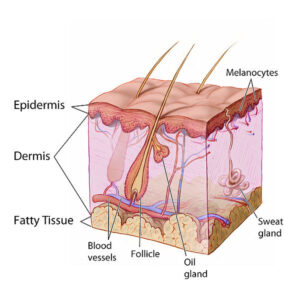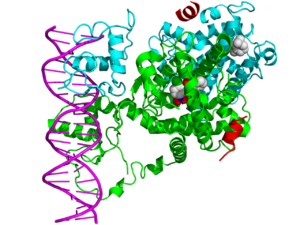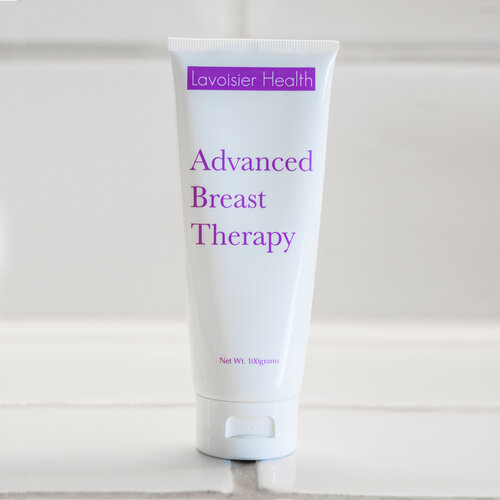NOTE: WHAT FOLLOWS IS A THEORETICAL DISCUSSION. ABT IS NOT INTENDED TO DIAGNOSE OR TREAT ANY DISEASE. WE ARE NOT MEDICAL PROFESSIONALS AND ADVISE YOU CONSULT WITH LICENSED MEDICAL PROFESSIONALS FOR ANY INPUT ON TREATING OR DIAGNOSING ANY DISEASE.
PPAR Agonists Can Improve Your Skin and Reduce Benign Breast Pain
If you struggle with dry, dull, or inflamed skin, or if you experience pain or discomfort in your breasts due to hormonal changes or fibrocystic disease, you might want to learn more about PPAR agonists, natural compounds that can help you achieve smoother skin, lower inflammation, and relieve benign breast pain. In this post, we’ll explain what PPAR agonists are, how they work, and where to find them.
What are PPAR agonists and how do they work?
PPARs, or peroxisome proliferator-activated receptors, are proteins that can bind to DNA in our cells and regulate the expression of certain genes.
PPAR agonists (ligands) are substances that “activate” the PPARs, catalyzing regulation of several key health processes, including lipid metabolism, inflammation, & cell differentiation. Crucially, PPAR agonists are involved in regulating processes related to skin repair/health as well as breast health.
PPAR agonists include essential fatty acids & other natural substances as well as synthetic drugs.
PPAR ligands are a key element for breast health as well as skin health.
Breast Health
Studies have found that PPAR ligands have a potential role in breast health by reducing the risk of breast cancer and treating certain benign breast conditions such as fibroadenomas and fibrocystic breast disease.
Benign breast conditions (BBD) are non-cancerous disorders of the breast that affect many women of reproductive age. They cyclical mastalgia (breast pain associated with the menstrual cycle) as well as fibrocystic changes (lumps and cysts), amongst other conditions.
BBD are influenced by hormonal factors, such as estrogen and progesterone, as well as environmental factors, such as diet and lifestyle.
How can PPAR ligands be useful for BBD?

Several studies have suggested that PPAR ligands may have beneficial effects on BBD by modulating the hormonal, inflammatory and proliferative pathways that are involved in their pathogenesis. Some of the possible mechanisms are:
- PPARγ ligands can inhibit the aromatase enzyme that converts androgens to estrogens in adipose tissue. This may reduce the local estrogen production and its stimulatory effect on breast epithelial cells.
Baranova, PPAR Ligands as Potential Modifiers of Breast Carcinoma Outcomes, PPAR Research, Volume 2008; Seargent et al, GW9662, a potent antagonist of PPARγ, inhibits growth of breast tumour cells and promotes the anticancer effects of the PPARγ agonist rosiglitazone, independently of PPARγ activation, Br J Pharmacol. 2004 Dec; 143(8): 933–937. - PPARγ ligands can also interfere with the estrogen receptor (ER) signaling in breast cells by competing for coactivators or inducing corepressors. This may result in reduced ER-mediated gene transcription and cell proliferation (ibid).
- PPARγ ligands can induce apoptosis (programmed cell death) in breast cells by activating the caspase cascade or modulating the expression of apoptotic genes (ibid).
- PPAR ligands can inhibit the expression of vascular endothelial growth factor (VEGF), a key factor for angiogenesis (new blood vessel formation) in breast tissue. This may limit the nutrient supply and growth of breast lesions.
Hatton & Lee, Clinical Use of PPARg Ligands in Cancer, PPAR Research Volume 2008. - PPAR ligands can modulate the inflammatory response in breast tissue by affecting the production of cytokines, chemokines and prostaglandins. These molecules are involved in pain perception, immune activation and tissue remodeling (Barnova; Hatton & Lee).
What is the evidence for PPAR ligands in BBD?
Though much the evidence supporting PPAR ligands for BBD comes from in vitro and animal studies (Barnova; Seargent; Hatton & Lee), there are several human studies supporting PPAR activators for treating BBD.
One study found that women with BBD who were treated with pioglitazone, a PPARγ ligand, for 12 weeks had a significant reduction in breast pain intensity compared to placebo.
Lupinacci & Pistilli, Clinic Trial NCT05013255.
Another study reported that women with BBD who were treated with rosiglitazone, another PPARγ ligand, for 6 months had a significant decrease (almost 10%) in breast density compared to placebo. (note: Breast density is a risk factor for breast cancer development).
Reimers et al, Benign breast disease and changes in mammographic breast density, Breast Cancer Research 23, Art. 49, 2021.
Some of the main naturally sources of PPAR ligands are essential fatty acids & several studies have suggested increased consumption of EFAs as a way to ameliorate BBD (see, for example, Gateley et al, Plasma fatty acid profiles in benign breast disease, Br J Surg. 1992 May: 79(5):407-9).
We at Lavoisier Health Solutions have had tremendous success in resolving hormonal breast issues (PMS breast pain, fibroid cysts, lumpy breasts) with ABT. ABT acts by topically delivering Essential Fatty Acids across the skin barrier, where they can efficiently catalyze PPAR activity.
Learn More Here
Skin care too!

PPAR Activators - The Next Major Advancement for Skincare?
In addition to their potential benefits for breast health, PPAR ligands have been studied for their effects on skin integrity – including skin aging as well as serious skin conditions.
In fact, an article co-authored by a leading scientist at Rodan & Fields recently declared that PPAR could possibly be the “next major advancement for functional skin care”, with the critical aspect being the migration from research to mainstream usage. Perhaps the biggest thing since retinoids and strong potential to boast retinoid efficacy.
Craw & Majewski, “Coding Skin for Care: PPAR Ligands as Retinoid Alternatives and Adjuvants—An Exploration”, Cosmetics & Toiletries, January 2022.
PPAR ligands have been shown to have anti-inflammatory and antioxidant effects on the skin, which can help reduce the signs of aging such as wrinkles, fine lines, and loss of firmness.
Sertznig et al, Peroxisome proliferator-activated receptors (PPARs) and the human skin: importance of PPARs in skin physiology and dermatologic diseases, Am J Clin Dermatol. 2007; 9(1):15-31
Ramot et al, The role of PPARγ-mediated signalling in skin biology and pathology: new targets and opportunities for clinical dermatology, Exp Dermatol. 2015 Apr; 24(4):245-51.
Some of the skin conditions that may benefit from PPAR ligands include:
- Atopic dermatitis/eczema: PPAR ligands can reduce the clinical symptoms of atopic dermatitis by suppressing the production of inflammatory cytokines, enhancing the synthesis of ceramides and other epidermal lipids, and restoring the skin barrier integrity (Sertzing, Ramot).
- Psoriasis: PPAR ligands can improve psoriasis skin lesions by inhibiting keratinocyte proliferation, inducing keratinocyte differentiation, and modulating immune responses (Sertzing, Ramot). Some synthetic PPARγ ligands, such as thiazolidinediones, have been used as oral drugs for moderate chronic plaque psoriasis (Sertzing).
- UV damage: PPAR ligands can protect the skin from UV-induced damage by increasing the expression of antioxidant enzymes, DNA repair enzymes, and anti-apoptotic proteins. They can also prevent UV-induced photoaging by stimulating collagen synthesis and inhibiting matrix metalloproteinases (Ramot).
- Wrinkles, crepey skin, scars, stretch marks: PPAR ligands can improve the appearance of these skin conditions by enhancing the production of extracellular matrix components, such as collagen and elastin, and by promoting wound healing and tissue remodeling (Ramot, Craw & Majewski).
Lavoisier Health - Pioneering the delivery of PPAR agonists!
Over 20 years ago, our team developed a topical composition that enables Essential Fatty Acids to traverse the skin barrier, where they can catalyze PPAR activity in an efficient manner.
Our users have reported relief from hormonally related breast conditions as well as benefits for skincare issues ranging from wrinkles to crepey skin to atopic dermatitis to resolving severe frostbite scarring.
Many say it’s one of the best skin creams they’ve ever used!
Disclaimer: This product is not intended to diagnose, treat, cure, or prevent any disease. The statements made regarding this product have not been evaluated by the Food and Drug Administration (FDA). The efficacy of this product has not been confirmed by FDA-approved research. This product is for external use only and should not be applied to irritated or broken skin. Do not use this product if you are allergic to any of its ingredients. Discontinue use and consult your doctor if any adverse reactions occur.



